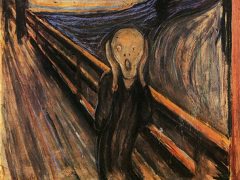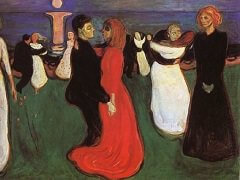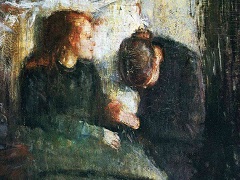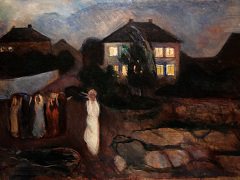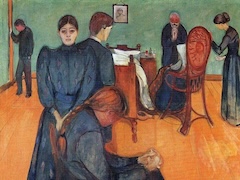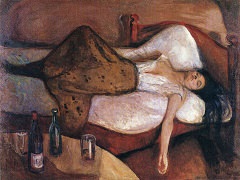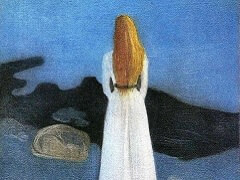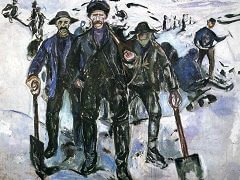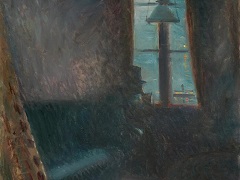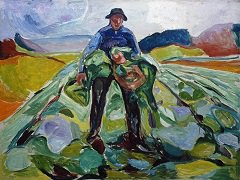Woman in Three Stages, 1895 by Edvard Munch
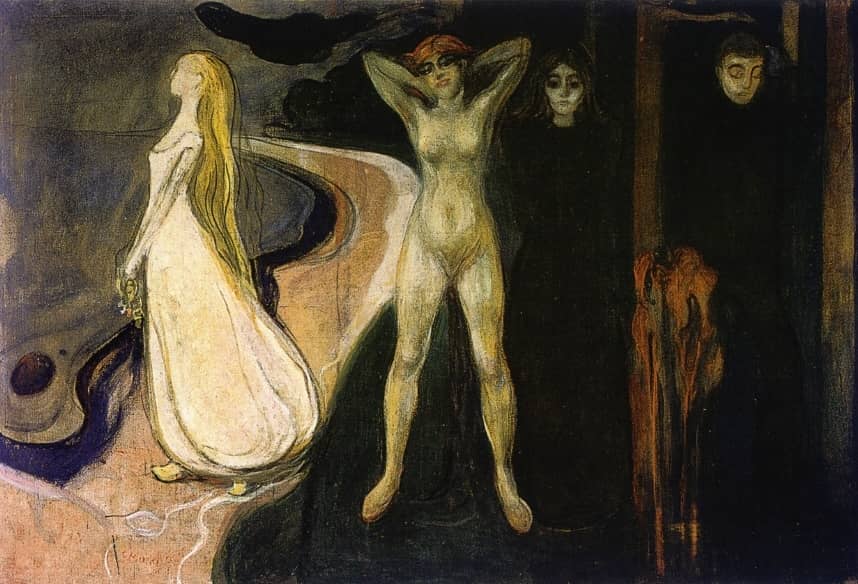
This large canvas, sometimes called Sphinx, is the principal version of a theme that Munch frequently repeated and modified. It is the recognizable point of origin for The Dance of Life, and it derived in turn from numerous works depicting the confrontation of Man and Woman. It is also closely related to the simpler parting or detachment theme, recorded in a number of oils and prints, from which it has borrowed two principal personages - the maiden and her lover.
Similar to The Three Ages of Woman by famous Austrian artist Gustav Klimt, the chronology of womanhood becomes the main symbolic content in Woman in Three Stages. To preserve picture margin and is isolated between two tree trunks. The red plant is the same as in the probably earlier Jealousy, but assumes the added significance of shedding life blood - a motif fully developed in Parting. It is characteristic for Munch to seek plausibility even in his most fanciful themes, but such insistence upon credibility does not reduce the power of Munch's symbols. The virgin is white, in billowing dress with flowing hair, standing on the sand strip between water and forest and straining toward a distant horizon. As in The Dance of Life, the central position is occupied by Woman in full and sensuous maturity. Here she is rendered naked, provocatively frontal, red-haired and red-lipped, with her arms raised and her head tilted in brazen coquetry and whorish contrast with her other selves. Close to her, like a shadow, is a dark image of spent womanhood whose embodiment stands with raised shoulders, slim waist, and pointed mouth. This last of the tree women is nearest to Man, both in position and in the somber black clothing.
The painting reiterates the scene at Aasgaardstrand with its powerfully swirling beach line as the unifying formal element.

